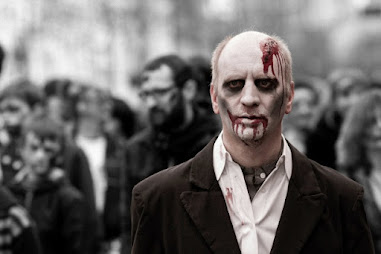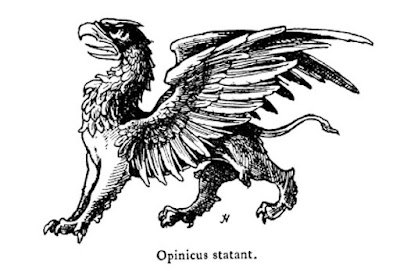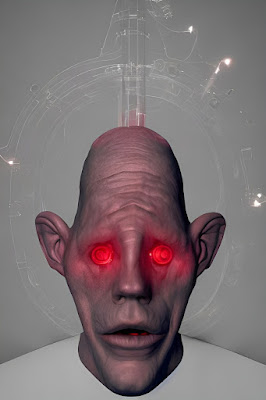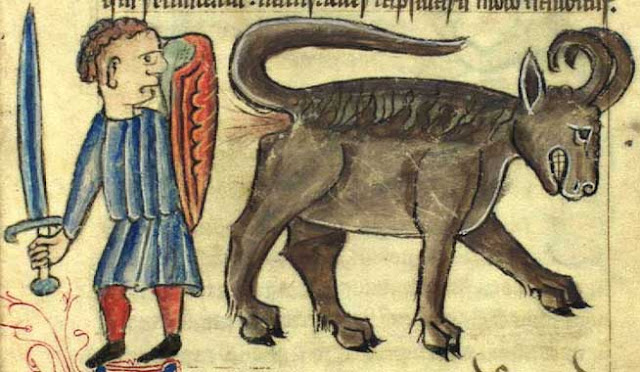This particular creature has been on my list to do for a bit. I had read about this creature in connection to the succubus many years ago but never could find anything else about it. Mostly I think due to my inability to remember how it was spelled.
Thankfully I now have the movie to help me out.
SennentuntschiMedium Construct (demonic)
Frequency: Very Rare
Number Appearing: 1 (1)
Alignment: Chaotic [Chaotic Evil]
Movement: 120' (40') [12"]
Armor Class: 9 [10]
Hit Dice: 3d8+3*** (23 hp)
To Hit AC 0: 14 (+5)
Attacks: 1 fist or by weapon
Damage: 1d6+2 or by weapon+2
Special: Charm, illusion, immune to mind-affecting magic, immune to poison and gas, only harmed by fire
Save: Monster 3
Morale: 12 (12)
Treasure Hoard Class: None
XP: 125 (OSE) 170 (LL)
Str: 16 (+2) Dex: 16 (+2) Con: 18 (+3) Int: 14 (+1) Wis: 14 (+1) Cha: 18 (+3)
Sennentuntschi, which is believed to mean "shepherd's wife" or "herdsmen wife," is a type of construct inhabited by a demonic spirit. The creature is created by making a life-sized doll out of clothes, straw, and whatever is on hand and then animated with the demonic spirit.
The sennentuntschi, once animated, will act as the "wife" of the shepherds who animated her. She will cook, clean, and even share their bed at night. She cannot speak but casts a powerful charm and illusion effect on all around her. The men who created her automatically fail their saving throws. To them and all others who fail, she will appear as a beautiful young woman. If the save is made, then she will appear as a grotesque collection of rags and straw in a human shape. Clerics of pure and good intent (Lawful, Lawful Good) gain a +3 bonus to their saving throw against this charm.
The goal of the sennentuntschi is to kill the men that animated her and return to her native plane with their souls. She can't though just kill them outright. The men must first commit an act of violence against her. This can be as simple as one of the men slapping her, though usually, the violence escalates from there. Each of the men that animated her, typically three, must commit this act. Once that is complete she will seek to kill them or have them kill each other. As a construct, she is immune to all mind-affecting magic but is vulnerable to fire. Cold, electricity, gas, or poison has no effect on her.
If anyone attacks the sennentuntschi anyone charmed by her will do anything to protect her including killing others. If the sennentuntschi is destroyed then the charm is broken. It is rumored that if a sennentuntschi is created and no violence is perpetrated against it for the season then the magic holding it together dies and no souls are damned. This is a very rare occurrence.
Animating a Sennentuntschi: A sennentuntschi can be animated by a folk magic ritual (0 level Witch spell) known to the shepherds and herdsmen of the mountains.
Create Sennentuntschi
Witch Ritual Level: 0
Ritual Casters: Three shepherds
Duration: One Season, typically Summer
Range: One Sennentuntschi poppet
The ritual to animate a sennentuntschi is typically handed down from older shepherd to younger in the form of a story about how the first sennentuntschi was animated. All that is needed is a life-sized poppet to house the sennentuntschi spirit and the three men to summon it.
Typically this is an older shepherd, a younger one, and a boy; each representing the stages of life for a man. The ritual is then performed, usually with the imbibing of much alcohol, and the spirit is summoned.
Many occult scholars believe that the demonic spirit inhabiting the poppet is akin to the succubus or other Lilim.


























